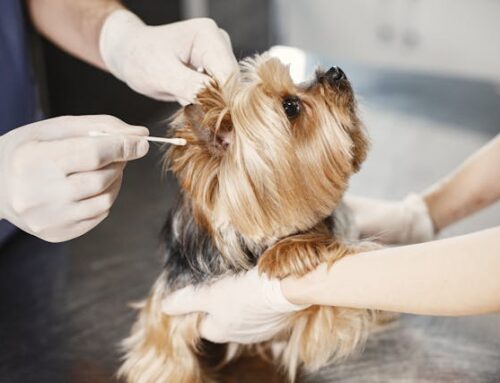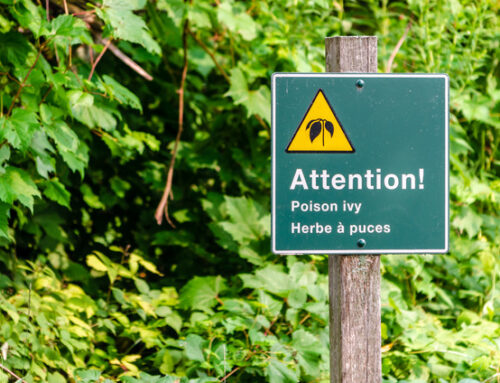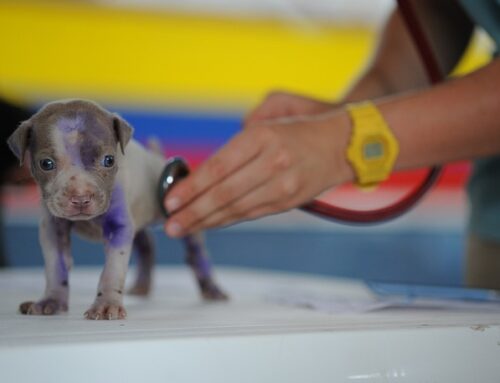Introduction: Grooming Tips for Dogs
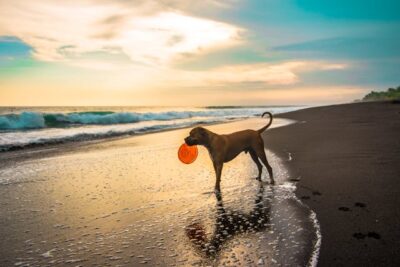
Welcome to the ultimate guide for dog owners whose furry friends can’t get enough of the beach! In this comprehensive guide, we’ll explore top grooming tips to keep your beach-loving dogs healthy, happy, and looking their best in 2024.
From managing sand and saltwater to protecting their skin and coat, we’ve got you covered. Let’s dive in and make this summer a breeze for you and your beach-loving pup!
Characteristics of Dogs that Love the Beach
Dogs that love the beach often exhibit a unique set of characteristics that reflect their affinity for sand, surf, and sun. They are typically energetic and adventurous, always eager to explore and play in the water.
These dogs often have a water-resistant coat, which helps protect them from the elements. They may also have a strong retrieving instinct, enjoying games of fetch in the water. Overall, beach-loving dogs are usually sociable, enjoying the company of other dogs and people alike as they bask in the coastal ambiance.
Importance of Grooming for Beach-Loving Dogs
Grooming is especially important for beach-loving dogs to maintain their health and well-being. Regular grooming helps remove sand, salt, and other debris that can accumulate in their coat, preventing skin irritation and infections. It also helps to manage their coat’s moisture levels, as frequent exposure to saltwater and sun can dry out their skin and coat.
Additionally, grooming allows for early detection of any skin issues or parasites that may be common in coastal areas. Overall, proper grooming is essential for keeping beach-loving dogs comfortable, healthy, and looking their best.
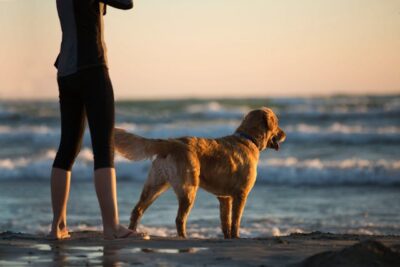
Understanding Your Dog’s Coat and Skin
Different Coat Types and Their Care Needs
Understanding your dog’s coat type is crucial for providing the right care. Dogs can have different coat types, such as short, medium, long, curly, or double coats, each with specific grooming needs. Short-coated dogs require less maintenance but may benefit from regular brushing to reduce shedding.
Medium to long coats need more frequent brushing to prevent matting and tangles. Curly coats, like those of Poodles, require regular professional grooming to prevent matting.
Double-coated breeds, such as Huskies, need regular brushing to manage shedding and to prevent their undercoat from becoming too thick. By understanding your dog’s coat type, you can provide the best care to keep their skin and coat healthy.
Protecting Your Dog’s Skin from Sun and Saltwater
Protecting your dog’s skin from the sun and saltwater is essential for their health and comfort. Just like humans, dogs can get sunburned, especially those with light-colored or thin coats. Using dog-safe sunscreen on exposed areas, such as the nose, ears, and belly, can help prevent sunburn.
After a swim in the ocean, it’s important to rinse your dog with fresh water to remove salt and sand, which can irritate their skin. Regular grooming and moisturizing can also help maintain their skin’s health, keeping it hydrated and protected.

Pre-Beach Grooming Routine
Brushing Your Dog’s Coat to Remove Tangles and Mats
A pre-beach grooming routine should include brushing your dog’s coat to remove tangles and mats. Start by using a slicker brush to gently brush through the coat, starting from the ends and working your way up to the roots.
For dogs with longer or curly coats, use a comb to carefully work through any remaining tangles or mats. Regular brushing not only prevents discomfort but also helps distribute natural oils, keeping the coat healthy and shiny.
By establishing a pre-beach grooming routine, you can ensure your dog is comfortable and ready to enjoy a day at the beach!
Trimming Excess Hair Around the Eyes, Ears, and Paws
Before heading to the beach, it’s essential to trim excess hair around your dog’s eyes, ears, and paws. Long hair around the eyes can obstruct their vision and trap sand and debris. Trimming hair around the ears helps improve air circulation and reduces the risk of ear infections, which can be common in beach-loving dogs.
Additionally, keeping the hair on their paws short helps prevent sand and saltwater from getting trapped, reducing the risk of irritation. By incorporating these grooming steps into your pre-beach routine, you can help keep your dog comfortable and healthy during their beach adventures!
Checking for Parasites and Ticks
As part of your pre-beach grooming routine, it’s crucial to check your dog for parasites and ticks. Coastal areas can be hotspots for ticks and fleas, which can transmit diseases to your furry friend. Use a fine-toothed comb to check for any signs of these pests, paying close attention to warm and hidden areas like between toes and under the tail.
If you find any parasites or ticks, remove them carefully and consult your veterinarian for further advice. Regular grooming and parasite prevention can help keep your dog safe and healthy during beach outings.

Post-Beach Grooming Routine
Rinsing Your Dog with Fresh Water to Remove Sand and Salt
After a fun day at the beach, it’s important to rinse your dog with fresh water to remove sand and salt. Saltwater and sand can irritate your dog’s skin and coat if left on for too long. Use a gentle stream of water to thoroughly rinse their entire body, paying special attention to their paws, belly, and undercoat.
Once rinsed, gently towel dry your dog to remove excess water and prevent them from getting chilled. This post-beach grooming routine helps keep your dog comfortable and prevents skin irritation.
Drying Your Dog’s Coat Thoroughly
After rinsing your dog with fresh water, it’s important to dry their coat thoroughly. Dampness can lead to skin irritations and infections, especially in warm weather. Use a clean towel to gently pat their coat dry, absorbing as much moisture as possible. For dogs with longer coats, you may also use a hairdryer on a low, cool setting to speed up the drying process.
Pay particular attention to drying their paws and underbelly, as these areas can remain damp. A thorough drying routine helps keep your dog comfortable and prevents skin issues after a day at the beach.
Checking Ears for Sand and Moisture
After a day at the beach, it’s essential to give your furry friend a post-beach grooming session, focusing on checking their ears for sand and moisture. Start by gently examining the outer ear for any visible sand or debris, carefully removing it with a soft cloth or cotton ball. Next, check inside the ear for any signs of moisture, as dampness can lead to infections.
Use a pet-safe ear cleaner to gently wipe the ear’s inner folds, ensuring it’s dry and clean. Finally, reward your pup for their cooperation, and they’ll be ready for more beach adventures!
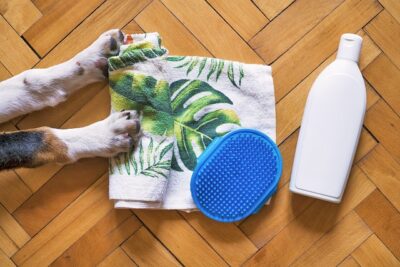
Bathing Your Beach-Loving Dog
Choosing the Right Shampoo for Your Dog’s Coat
When bathing your beach-loving dog, it’s crucial to choose the right shampoo for their coat type. Look for a gentle, pet-safe shampoo that is formulated specifically for dogs, as human shampoo can be too harsh for their skin.
For dogs with sensitive skin, opt for a hypoallergenic or oatmeal-based shampoo to prevent irritation. If your dog has a thick coat or tends to get tangled, consider a moisturizing shampoo to keep their fur soft and manageable.
After bathing, rinse thoroughly to remove all traces of shampoo, and reward your pup with a treat for a job well done!
Proper Bathing Technique to Remove Sand and Salt
Bathing your beach-loving dog requires a proper technique to effectively remove sand and salt from their fur. Start by thoroughly wetting your dog’s coat with lukewarm water to loosen any sand or salt. Apply a dog-friendly shampoo, focusing on areas where sand and salt tend to accumulate, such as the paws, belly, and tail.
Gently massage the shampoo into the coat, ensuring it reaches the skin to remove any trapped sand or salt. Rinse your dog thoroughly, making sure all shampoo residue is removed. Finally, dry your dog with a towel or hairdryer on a low setting, and reward them with a treat for their patience during the bath.
Drying Your Dog’s Coat After Bathing
After bathing your beach-loving dog, it’s important to properly dry their coat to prevent skin irritation and matting. Start by gently squeezing excess water from their fur using a towel. Avoid vigorous rubbing, as this can tangle the hair.
If your dog is comfortable with it, you can use a hairdryer on a low, cool setting to further dry their coat. Ensure the hairdryer is held at a safe distance to prevent overheating. Once their coat is mostly dry, brush it gently to remove any tangles or mats.

Paw Care for Beach-Loving Dogs
Checking and Trimming Nails Regularly
For beach-loving dogs, paw care is essential, including regularly checking and trimming their nails. Long nails can cause discomfort and affect your dog’s gait. To trim your dog’s nails, use a pet-specific nail trimmer and trim only the tip of the nail, avoiding the quick.
If your dog has clear nails, you can see the pink quick inside; if they have dark nails, trim small amounts at a time to avoid cutting the quick. Regular nail trimming helps maintain your dog’s paw health and ensures they can walk comfortably on sandy beaches.
Protecting Paws from Hot Sand and Sharp Shells
When caring for beach-loving dogs’ paws, it’s crucial to protect them from hot sand and sharp shells. Before heading to the beach, consider using protective shoes or boots designed for dogs to shield their paws from hot surfaces and sharp objects. These shoes can provide a comfortable barrier and prevent burns or cuts.
Additionally, apply a pet-safe paw balm or wax to create a protective barrier. After beach outings, rinse your dog’s paws with cool water to remove sand and debris, then pat them dry with a towel. Regular paw care helps prevent injuries and keeps your dog’s paws healthy for more beach fun!
Cleaning and Moisturizing Paw Pads
To keep your beach-loving dog’s paws healthy, it’s important to clean and moisturize their paw pads regularly. After beach outings, rinse your dog’s paws with cool water to remove sand and salt. Pat them dry with a towel, paying special attention to the spaces between the toes.
Apply a pet-safe moisturizing balm or lotion to the paw pads to prevent them from drying out and cracking. Regular paw care helps maintain your dog’s paw health and ensures they can enjoy the beach without discomfort.
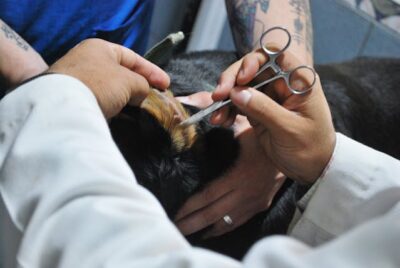
Ear Care Tips
Checking for Signs of Infection
For beach-loving dogs, ear care is essential, especially checking for signs of infection. After beach outings, inspect your dog’s ears for redness, swelling, or a foul odor, which could indicate an infection. Gently wipe the outer ear with a damp cloth to remove any sand or debris. Avoid inserting anything into the ear canal, as this can cause injury.
If you notice any signs of infection, consult your veterinarian for proper diagnosis and treatment. Regular ear checks help maintain your dog’s ear health and ensure they can continue to enjoy the beach safely.
Cleaning Your Dog’s Ears After Beach Visits
After beach visits, it’s important to clean your beach-loving dog’s ears to prevent infections. Start by inspecting the ears for any signs of redness, swelling, or discharge. Gently wipe the outer part of the ear with a damp cotton ball to remove any sand, salt, or debris. Avoid inserting anything into the ear canal, as this can damage the eardrum.
If you notice any signs of infection, such as a foul odor or excessive scratching, consult your veterinarian for proper diagnosis and treatment. Regular ear cleaning helps maintain your dog’s ear health and ensures they can enjoy the beach without discomfort.
Using Ear Drops or Solutions Recommended by Your Vet
For beach-loving dogs, using ear drops or solutions recommended by your vet can help maintain ear health. After beach visits, if your vet recommends it, gently apply the prescribed ear drops or solution to your dog’s ears. Follow your vet’s instructions carefully to avoid causing any harm. These drops or solutions can help prevent infections and remove excess moisture or debris.
Regular use, as advised by your vet, can help keep your dog’s ears clean and healthy, ensuring they can continue to enjoy the beach safely.
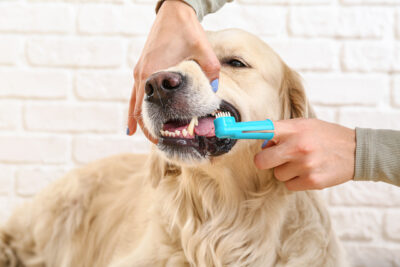
Dental Care for Beach-Loving Dogs
Importance of Dental Hygiene for Overall Health
Dental care is crucial for beach-loving dogs, as good oral hygiene is essential for their overall health. Regular brushing helps prevent plaque and tartar buildup, reducing the risk of dental disease and other health issues.
Untreated dental problems can lead to pain, infection, and even organ damage. Additionally, dental disease has been linked to other health problems such as heart disease and diabetes. By maintaining your dog’s dental hygiene, you can help ensure they stay healthy and happy for more beach adventures.
Brushing Your Dog’s Teeth Regularly
Regularly brushing your beach-loving dog’s teeth is essential for their dental care. Use a dog-specific toothbrush and toothpaste to gently brush their teeth, focusing on the outer surfaces. Brushing helps remove plaque and prevent tartar buildup, reducing the risk of dental disease.
Aim to brush your dog’s teeth at least 2-3 times a week, or as recommended by your veterinarian. With regular brushing, you can help maintain your dog’s dental health, ensuring they can continue to enjoy the beach without dental issues.
Providing Dental Chews or Toys for Oral Health
Providing dental chews or toys is a great way to care for your beach-loving dog’s teeth. Chews and toys designed for dental health can help reduce plaque and tartar buildup, promoting good oral hygiene. Look for products that are specifically designed to promote dental health and are safe for your dog to chew.
Regular use of dental chews or toys, in addition to other dental care practices, can help keep your dog’s teeth clean and healthy, ensuring they can continue to enjoy the beach without dental issues.

Dealing with Sand and Odor
Removing Sand from Your Dog’s Coat and Paws
Dealing with sand and odor after a beach visit is important for your dog’s comfort. Start by shaking out their coat to remove loose sand, then use a towel to gently brush off remaining sand.
For their paws, rinse them with fresh water to remove sand and salt, then dry them thoroughly. Regular grooming and cleaning after beach outings can help prevent skin irritation and keep your dog feeling fresh.
Using Pet-Friendly Odor Neutralizers or Sprays
To help your dog deal with sand and odor after a beach visit, consider using pet-friendly odor neutralizers or sprays. These products can help eliminate any lingering smells on your dog’s coat. Look for products that are safe for pets and specifically designed to neutralize odors.
Follow the instructions carefully when using these products to ensure they are effective and safe for your dog. Regular use of odor neutralizers can help keep your dog smelling fresh between baths.
Washing Your Dog’s Bedding Regularly
Regularly washing your dog’s bedding is essential for dealing with sand and odor. Beach visits can leave behind sand and salt on your dog’s bedding, leading to odors and discomfort. Wash bedding in hot water with a pet-safe detergent to remove sand, dirt, and odors effectively.
Ensure bedding is completely dry before placing it back in your dog’s sleeping area to prevent mold and mildew growth. Regular washing of bedding helps keep your dog’s sleeping area clean and comfortable.

Sun Protection for Your Dog
Using Dog-Safe Sunscreen on Exposed Areas
Sun protection is important for your dog, especially on exposed areas like the nose, ears, and belly. Use a dog-safe sunscreen with an SPF of at least 30 to protect against sunburn and skin damage. Apply sunscreen before heading outdoors, and reapply as directed, especially after swimming or if your dog is licking their skin.
Avoid using human sunscreen, as it may contain ingredients that are harmful to dogs if ingested. Sun protection helps keep your dog safe and comfortable during sunny beach days.
Providing Shade and Fresh Water at the Beach
When at the beach, it’s important to provide sun protection for your dog by offering shade and fresh water. Set up a canopy, beach umbrella, or find a shaded area for your dog to rest and cool off. Ensure there is always access to fresh, clean water to prevent dehydration.
Limit your dog’s time in direct sunlight, especially during the hottest parts of the day. By providing shade and water, you can help protect your dog from the sun’s harmful rays and keep them comfortable at the beach.
Recognizing Signs of Sunburn or Heatstroke
Recognizing signs of sunburn or heatstroke is crucial for your dog’s sun protection. Signs of sunburn include red or inflamed skin, especially on areas with thin fur or no fur. If you notice these signs, move your dog to a shaded area and apply a cool compress to the affected area.
Signs of heatstroke include excessive panting, drooling, rapid heartbeat, and weakness. If you suspect heatstroke, move your dog to a cool area, offer water, and seek veterinary attention immediately. By recognizing these signs, you can help protect your dog from the sun’s harmful effects.

Professional Grooming Tips and Services
When to Seek Professional Grooming Services
For your beach-loving dog, seeking professional grooming services may be necessary for maintaining their coat and skin health. If your dog’s coat becomes matted or tangled from sand and saltwater, a professional groomer can safely remove these tangles without causing discomfort.
Professional groomers can also provide specialized treatments for sunburned or irritated skin, ensuring your dog’s comfort after beach visits. Additionally, if your dog has a double coat that sheds heavily, a professional groomer can help manage shedding and keep your dog’s coat healthy. Regular visits to a professional groomer can help keep your beach dog looking and feeling their best.
Choosing a Groomer Experienced with Beach-Loving Dogs
When choosing a groomer for your beach-loving dog, look for one with experience handling dogs that frequent sandy and salty environments. A groomer experienced with beach-loving dogs will understand the importance of removing sand, salt, and debris from the coat and paws. They will also be familiar with the specific grooming needs of these dogs, such as preventing matting and maintaining skin health.
Additionally, a groomer experienced with beach-loving dogs may offer specialized services, such as moisturizing treatments for dry skin or coat conditioning to protect against the elements. Choosing a groomer who understands the unique needs of beach-loving dogs can help ensure your pet receives the best care possible.

Traveling Tips for Beach Trips with Your Dog
Packing Essentials for Your Dog’s Beach Trip
When traveling to the beach with your dog, packing essentials can ensure a safe and enjoyable trip. Bring plenty of fresh water and a portable bowl to keep your dog hydrated. Don’t forget to pack their favorite toys for entertainment and a comfortable blanket or towel for them to rest on. A leash and collar with identification tags are essential for keeping your dog safe while exploring the beach.
Additionally, pack poop bags to clean up after your dog and be a responsible pet owner. These essentials will help make your dog’s beach trip comfortable and enjoyable for both of you.
Ensuring Your Dog’s Safety and Comfort During Travel
Ensuring your dog’s safety and comfort during travel to the beach is crucial. Secure your dog in a well-ventilated crate or with a seatbelt harness to prevent injuries in case of sudden stops or accidents. Make frequent stops to allow your dog to stretch, relieve themselves, and stay hydrated.
Keep the car temperature comfortable, avoiding leaving your dog in a hot car. These precautions will help keep your dog safe and comfortable during the journey to the beach.
Finding Dog-Friendly Beaches and Accommodations
When planning a beach trip with your dog, research dog-friendly beaches and accommodations in advance. Look for beaches that allow dogs and have amenities such as dog waste bags and water stations.
When booking accommodations, ensure they are pet-friendly and have pet-friendly policies. By finding dog-friendly beaches and accommodations, you can ensure a fun and hassle-free beach trip with your furry friend.
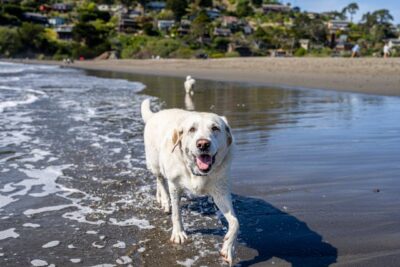
Conclusion: Grooming Tips
Summary of Key Grooming Tips
- Pre-Beach Grooming: Brush your dog’s coat to remove tangles and mats, trim excess hair around the eyes, ears, and paws, and check for parasites and ticks.
- Post-Beach Grooming: Rinse your dog with fresh water to remove sand and salt, dry their coat thoroughly, and check ears for sand and moisture.
- Bathing: Use the right shampoo for your dog’s coat, ensure proper bathing technique to remove sand and salt, and dry their coat after bathing.
- Paw Care: Regularly check and trim nails, protect paws from hot sand and sharp shells, and clean and moisturize paw pads.
- Ear Care: Check for signs of infection, clean ears after beach visits, and use vet-recommended ear drops or solutions.
- Dental Care: Brush your dog’s teeth regularly and provide dental chews or toys for oral health.
- Dealing with Sand and Odor: Remove sand from your dog’s coat and paws, use pet-friendly odor neutralizers, and wash your dog’s bedding regularly.
- Sun Protection: Use dog-safe sunscreen, provide shade and fresh water at the beach, and recognize signs of sunburn or heatstroke.
- Professional Grooming: Seek professional grooming services when necessary and choose a groomer experienced with beach-loving dogs.
Final Thoughts on Keeping Your Beach-Loving Dog Happy and Healthy
Regular grooming is essential for beach-loving dogs to maintain their health and well-being. By following these grooming tips, you can help your dog stay comfortable, healthy, and looking their best for all their beach adventures. Remember to also provide them with plenty of water, shade, and protection from the sun to ensure they have a safe and enjoyable beach experience.
If you’re looking for puppies for sale in Florida and surrounding areas, consider adopting from us, where our puppies are thoughtfully bred from reputable breeders.
Frequently Asked Questions (FAQs): Grooming Tips for Beach Loving Dogs
- How often should I groom my beach-loving dog?
- The frequency of grooming depends on your dog’s coat type and how often they visit the beach. Generally, regular brushing and cleaning after beach visits are recommended.
- Can I use human sunscreen on my dog?
- No, human sunscreen can be harmful to dogs if ingested. It’s essential to use a dog-safe sunscreen specifically formulated for pets.
- How do I prevent my dog’s coat from getting matted at the beach?
- Regular brushing before and after beach visits can help prevent mats and tangles. Use a slicker brush for dogs with longer coats.
- My dog hates baths. Any tips for making bath time easier?
- Try to make bath time a positive experience by using treats and praise. Use a dog-specific shampoo and rinse thoroughly to avoid irritation.
- Should I trim my dog’s nails before or after a beach trip?
- It’s best to trim your dog’s nails before a beach trip to prevent them from getting too long and causing discomfort while walking on sand.
- How do I know if my dog has sunburn?
- Signs of sunburn in dogs include red or inflamed skin, especially on areas with thin fur. If you suspect sunburn, consult your vet for advice.
- What should I do if my dog gets sand in their ears?
- Gently wipe the outer part of the ear with a damp cloth to remove sand. Avoid inserting anything into the ear canal, as this can cause injury.
- Can I use regular shampoo on my beach-loving dog?
- No, it’s best to use a dog-specific shampoo that is gentle on their skin and coat, as human shampoo can be too harsh.
- How can I protect my dog’s paws from hot sand?
- Consider using protective shoes or boots designed for dogs to shield their paws from hot surfaces and sharp objects at the beach.
- My dog loves to swim in the ocean. Do I need to rinse them with fresh water after?
- Yes, it’s important to rinse your dog with fresh water after swimming in the ocean to remove salt and sand, which can irritate their skin.

